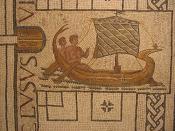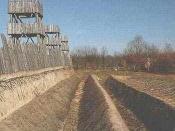Interactions between Rome and the Ancient Celts were traditionally exceedingly violent in nature. This is exemplified in two battles between the vast empire and its comparatively diminutive counterpart. The Boudiccan revolt was initiated by the rape of two small girls, and succeeded by the cruel massacre of a number of societies. The encounter at Alesia between the respective troops of Caesar and Vercingetorix was of equal brutality where a battle of wills and tactics existed within a larger battle between two ruthless armies.
Boudicca, the Iceni Queen and of Roman decent, ruled over a small tribe of Britons who challenged the colonisation plans of the Roman Empire in England. The Boudiccan Revolt was initiated due to the oppressive treatment by the Romans as well as the failure of the Romans to effectively govern British tribes. This resulted in the Iceni, Trinovante's and smaller tribes to Revolt which failed due to disorganised battle tactics.
The consequences of this revolt led to massacre and enslavement by the Romans. There are many underlying factors which caused the Iceni to resent the Romans, which ultimately led to the Boudiccan Revolt. The Roman lack of recognition of female heirs and assumed ownership of Iceni, as well of the violent rape of Boudicca's daughters were some of the underlying factors leading to Iceni resentment of the Romans.
The writings of Roman senator and historian Tacitus remain of great importance in the retelling of the Boudiccan Revolt. Of his main works, "Agricola" was written 35 years after the revolt on a soldier in Britain at the time of the revolt; and "Annals" written 15 years later, gives further detail on Boudicca. Tacitus gives his views on the reasons for the Boudiccan revolt - "His dominions were ravaged by the centurions; the slaves pillaged his house,


